Be "In-Tune" with Nature
Winter approaches
Krysia Soutar
It is autumn again here in the West Pennine hills and as I gaze out of my window I see colours of deep orange and brown, the trees are bare as energy is conserved for the coming winter.
All is still except for the little birds busy trying to find food. I am also busy preparing our home for the changing seasons, putting up our winter curtains to keep out the draughts as our house is very old so we need them!
At this time of year we receive less sunlight and consequently less Vitamin D, so it is time to start taking our daily boost of Vitamin D to help keep our immune system strong. There is also a risk of depression at this season, so we can help avoid this by getting outside in nature as much as possible.
Life in the Soil and Life in the Human Microbiome
Just as the richness and diversity of the soil organisms help to produce healthy and vibrant plant life, so does the richness of the microbial life within the human digestive tract help to support our mental and physical wellbeing via the gut-brain axis. Yes! The microbial life in our gut communicate with other organisms in our bodies. How wonderful, nothing in nature is disconnected, everything connects to promote a symbiosis and harmony of function, just like a musical tune.
New research has now linked a loss of diversity and a depletion of certain microbes with human mental health problems. The implications are to ensure that we maintain a richness of foods that help to feed our own healthy gut microbes.
Recipe for Autumn
Apple and Nut Desert
We have an abundance of apples just now from our weekly vegetable bag delivery - “An apple a day keeps the doctor away.”
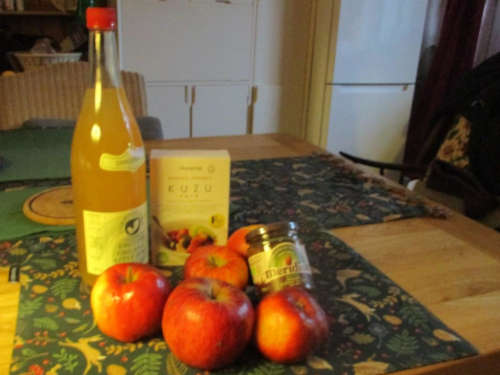 |
 |
Ingredients:
- 5 Large organic apples
- 3/4 cup of English organic apple juice
- 1 Large tablespoon almond butter
- Pinch of sea salt
- 1 tbsp kuzu
- 1-2 tbsp rice syrup (optional)
Method:
- Peel and cut the apples
- Place in pan with apple juice, salt and simmer until apples soft
- Mash apples until smooth
- Add the nut butter and kuzu ( dissolve kuzu first with little cold water)
- Stir to thicken
- Add rice syrup to taste
- Top with grated nuts and berries of your choice
- Best Served in small glass desert dish
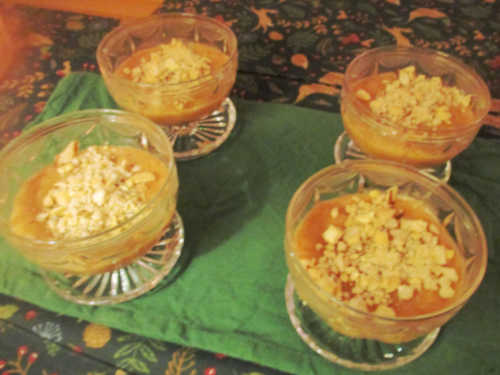 |
 |
Bon Appetit!
Preparing for winter: Coughs
Edwina Hodkinson
As the year turns and we take the deep dive towards winter, we watch the leaves change colour and fall from the trees until they become bare. There is chill in the air, and darker days bring with it the anticipation of winter illnesses. Many of us after almost two years apart from each other now have the “lurgy” caused by a whole host of unwelcome viruses that are not covid. These leave us unwell, depleted and often suffering from a cough.
Most people see a cough as a cough no matter now uncomfortable, annoying and exhausting, but there are different types of coughs. Coughs that may be dry or chesty where phlegm is produced, some where the phlegm feels stuck and unmoveable or coughs that feel wet and productive. There can also be infected coughs where the phlegm can be green or yellow.
Luckily for us nature provides some amazing plant medicine that can be very helpful for the different types of cough and even herbs for when you can’t decide what kind of cough you have but just need support.
One of the premier herbs for coughs especially dry ones is Mullein.
Mullein - Verbascus thapsus
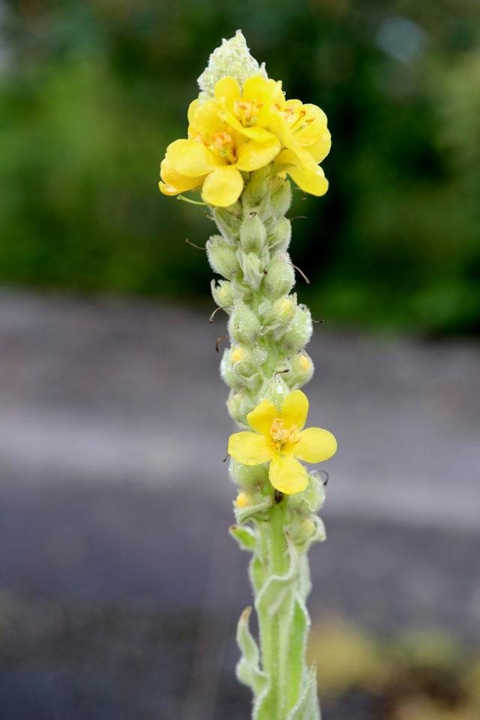 |
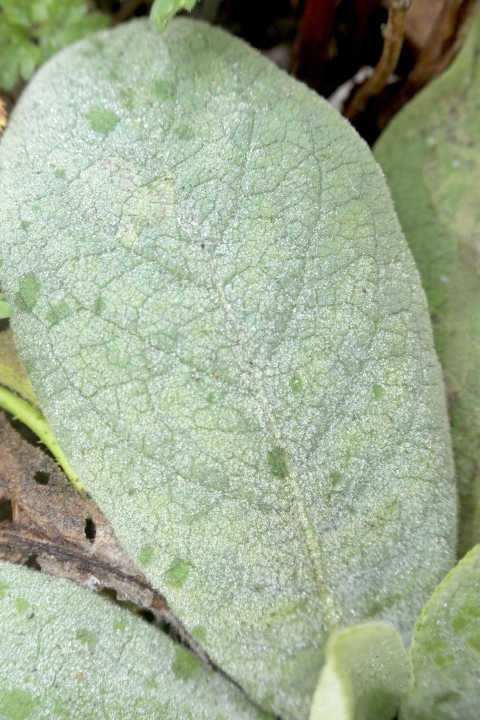 |
 |
 |
Mullein has tall spikes of yellow flowers and downy soft leaves, which can reach up to 2 meters tall. It likes disturbed ground and to grow by roadsides and is native to UK. It is a biennial the first year it grows as a rosette and then sends up its tall spikes in the second year to flower and produce seeds. There are a few species of mullein. All can be used medicinally but it is the Great Mullein – Verbascum Thapsus that is mainly used by Herbalists. Mullein has a long history as a medicinal plant throughout Europe.
As indicated by its soft velvety leaves Mullein is good for soothing harsh, dry coughs that need moistening and calming. It’s a relaxing expectorant and great for loosening stuck phlegm. It may seem when using expectorant herbs like Mullein that a cough seems a bit worse and wetter as the mucus is moved from the lungs so it can be coughed up. Mullein is good for all inflammatory conditions of the respiratory system such as pharyngitis, tracheitis, bronchitis and bronchiectasis.
Herbalists love using it as a lung tonic that can ease and heal chest conditions, opening up the lungs, helping you to breath deeper, and bringing healing especially when has been damaged due to infection, disease and continuous hard coughing. Its relaxant, antispasmodic, healing action means it’s good for supporting those with asthma. It’s a traditional remedy for TB, whooping cough, chest infections and pleurisy and is used as a decongestant, relieving colds, sinusitis and flu. It's also great for relieving irritating tickles on sore throats. Mullein enhances immunity as well as having an anti-bacterial and anti-viral action for influenza viruses. It has also been used traditionally for a long time as a smoking herb that is inhaled to open up respiratory passages and lung tissue although this is not recommended for coughs that are so dry the smoke can irritate them.
Other great herbs for dry coughs are marshmallow, thyme, plantain and liquorice.
Elecampane – Inula helenium
Elecampane is native to Europe It is another tall plant, a member of the sunflower family and has an association with faeries, hence its folk name of Elfdock. It’s a perennial plant that can grow up to 2m high, with yellow ragged sunflower like heads and large soft leaves with a greyish white underside. Dig up the roots/rhizome in autumn and winter and you will find they are large and aromatic. Taste them and when the perfume subsides they are very bitter.
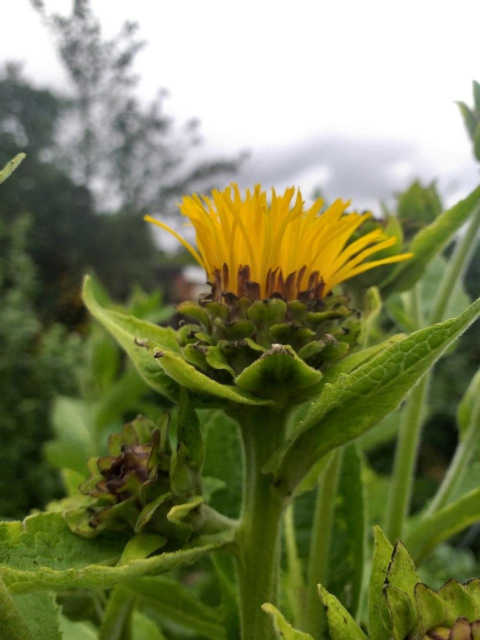 |
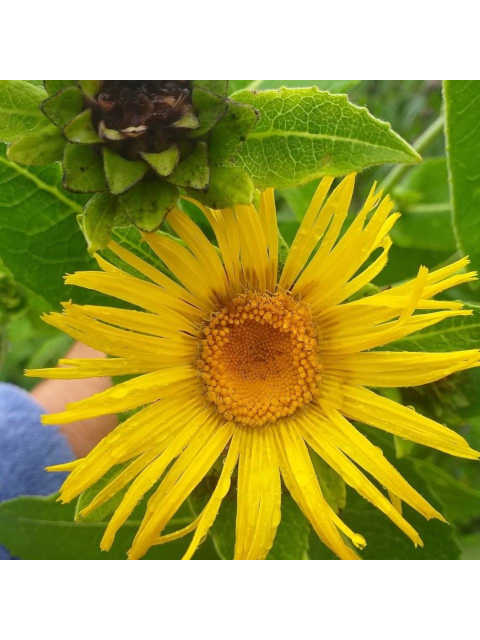 |
 |
 |
Elecampane is another premier chest herb and whereas mullein is cooling and moistening and great for dry coughs. Elecampane is a hot and drying herb, which makes it great for treating wet phlemy coughs that often get stuck on the chest. It’s warming, soothing, antiseptic and antibacterial which makes it helpful for chest infections. Elecampane is also great for colds, and bronchitis and has been used in the past to treat TB. Whilst it’s an effective chest herb, it’s not as good for dry irritating coughs as it can be too drying. Elecampane is great for clearing lymphatic tissue and swollen glands in the throat and helps treat a fever as well as supporting the immune system.
The aromatic bitters are also good for loss of appetite, wind, spasms, colic, and Elecampane is also used for weakness and exhaustion and convalescence particularly after a long illness. Caution – avoid during pregnancy. Some people may be allergic to this plant family (Asteraceae). Other warming and drying herbs for wet coughs are Angelica, ginger, garlic, horseradish, pine.
Thyme - Thymus vulgaris (Common or Garden thyme).
Thyme is a small Mediterranean herb whose name means strength and cleansing. Whilst its origins are in warmer climates it can be found flourishing in many gardens in the UK. And can be bought fresh or dried from grocers or markets. You can also find Wild Thyme as a native to the UK There are lots of varieties of Thyme and whilst all have medicinal properties common Thyme is the most powerful and effective.
The main constituent of Thyme is Thymol which is twenty times stronger than phenol the standard medical antiseptic. In the past it was used to medicate bandages and make a local anaesthetic for dentists.
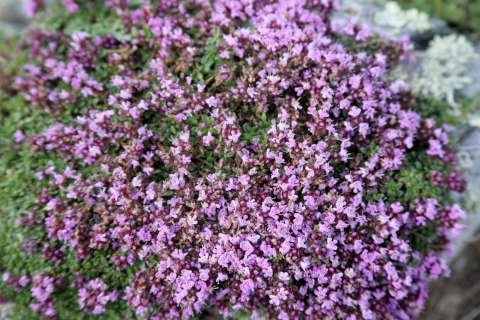 |
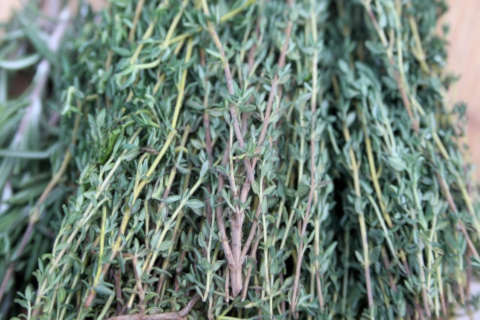 |
 |
 |
Thyme is another amazing a respiratory herb, that works in such a way that if you don’t know whether your cough is dry, wet or stuck or infected you can use Thyme. It is an all round cough herb and invaluable to treating coughs. Thyme gets things moving on the chest and reaches down deeply into the lungs. It’s a powerful antiseptic, expectorant and helps relieve coughs especially if they are dry, infective coughs and there is wheezing. Its very relaxing to the respiratory tract and often good for difficult to treat chest infections. It’s helpful in bronchitis and asthma too. It’s anti-spasmodic action means its good for easing coughing spasm and asthma and its traditionally been used for Bronchitis. It can be used with honey as a gargle and antiseptic for sore throats with sage and is good to use in all herbal cough syrups. It also has the ability to raise body temperature to fight off fever, which is the opposite of how modern medicine treats fever.
Herbalists like to use it with chronic coughs which have been treated by antibiotics and the immune and digestive system can be weakened resulting in an accumulation of pathogens not cleared from the body. Thyme can be quite a relaxing herb, being useful for stress, tension, headaches and insomnia which can be useful when the body needs to rest when sick.
Edwina Hodkinson BSc(Hons) is a qualified medical herbalist and is a member of the National Institute of Herbal Medicine (MIMH) Visit the Weeds and Wild Medicine website